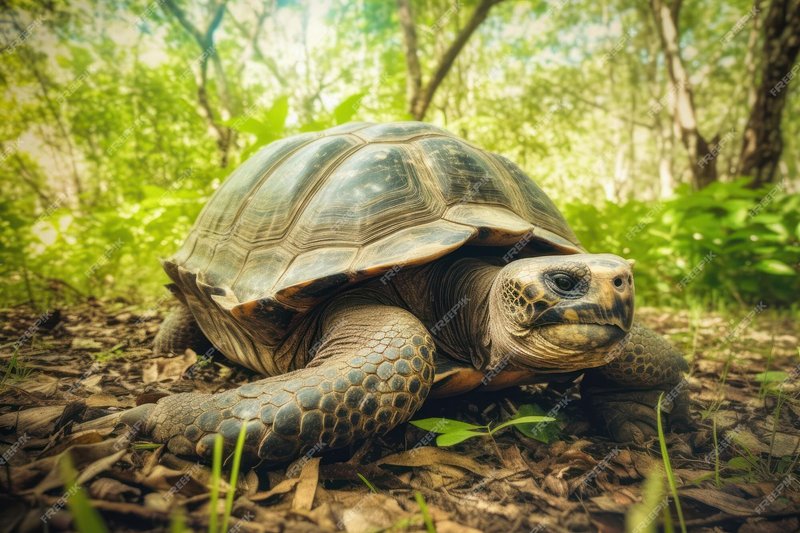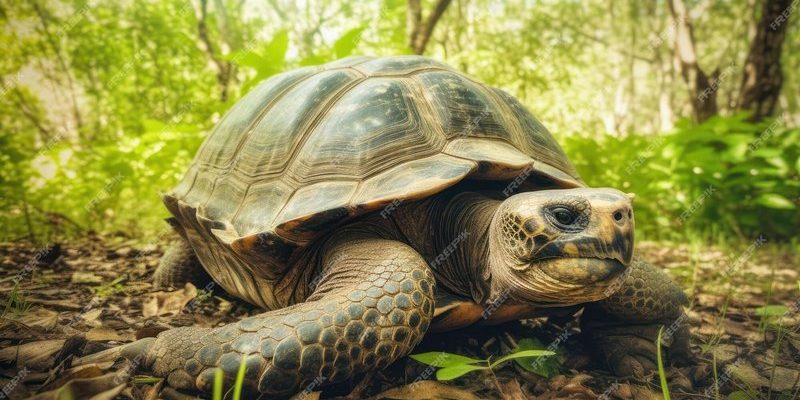
Understanding Their Habitat
The Aldabra Atoll, where these tortoises live, is a unique ecosystem. It’s a large, circular coral reef that has formed a lagoon, providing a mix of both land and sea habitat. The climate is tropical, which means it has some very hot, dry periods, along with heavy rains. This mix creates a challenging environment, but also one ripe with opportunities.
The tortoises can roam freely across expansive sandy beaches and low-lying vegetation. They spend their days munching on the rich flora, from grasses to succulent plants, which are surprisingly nutritious even when water is hard to find. This adaptability to their habitat is crucial. Aldabra giant tortoises can travel long distances to find food and water, helping them cope with the seasonal changes in their environment.
They are not just surviving; they have evolved traits that allow them to thrive despite the limited resources. By spending a lot of time soaking in the sun, they can absorb warmth, which is essential for their metabolism. These tortoises are excellent at conserving water, managing to survive long stretches without drinking by efficiently processing moisture from the plants they eat.
Water Conservation Techniques
Water is a precious resource on the Aldabra Atoll. Tortoises have evolved amazing ways to conserve it. When it rains, they take full advantage of the opportunity by drinking as much as they can. But here’s the thing: they don’t just wait for the rain. Their bodies are built to retain water.
They can store water in their bladders and use it slowly over time. This helps them survive during the dry spells when water is scarce. You might be surprised to learn that they can lose up to 30% of their body weight without suffering significantly. That’s resilience!
Another interesting adaptation is their diet. The plants they eat often have high water content. This means every bite is a little hydration boost, which is vital for their survival. They know how to choose the right plants to maximize their water intake, demonstrating an impressive level of instinct and intelligence.
Diet and Foraging Behavior
Speaking of diet, the Aldabra giant tortoise is a herbivore, munching mostly on grasses, leaves, and fruits. This isn’t just casual snacking; it’s a well-planned strategy. When food becomes scarce, they are able to switch their diet effectively.
These tortoises often forage during cooler parts of the day, typically in the early morning or late afternoon. This helps them avoid the hottest sun when foraging would be tougher and more exhausting. Plus, they can cover a lot of ground looking for food, which means they have a wider range of options.
You might be wondering how they decide what to eat. They have a keen sense for spotting the best vegetation, often choosing the most nutritious items available. These plants offer not only sustenance but also essential water, further helping them thrive in their environment.
Behavioral Adaptations
Behavior plays a big role in how Aldabra giant tortoises survive. These tortoises are known for their slow, deliberate movements. While you might think this is a disadvantage, it’s actually a huge asset. By moving slowly, they conserve energy and reduce the need for constant food intake.
They also exhibit a fascinating social behavior. During mating and basking times, you can find them congregating in groups. This not only provides a sense of community but also helps them share vital resources. For example, basking in the sun together allows them to regulate their temperatures better, which is essential for their health.
Their longevity also plays a role in their survival. Aldabra giant tortoises can live for over 100 years, meaning they have plenty of time to adapt to environmental changes and pass on their knowledge, enhancing the survival of future generations.
Natural Predators and Threats
Despite their size, Aldabra giant tortoises face threats from the environment and predators. When young, they are vulnerable to birds and other animals that might see them as a meal. However, as they grow, their size becomes a natural defense mechanism. It’s no easy feat to eat something that weighs several hundred pounds!
Human activities also pose a significant threat. Habitat destruction and climate change are real issues. The Aldabra Atoll is a protected area, which helps the tortoises, but challenges remain. Rising sea levels could affect their habitat, and it’s crucial for us to advocate for their conservation.
Despite these challenges, Aldabra giant tortoises continue to survive, thanks to the effort put into preserving their natural habitat and raising awareness about their needs.
The Role of Conservation Efforts
Conservation plays a massive role in ensuring these tortoises continue to thrive. Organizations and governments are working together to protect the Aldabra Atoll and its inhabitants. This includes monitoring populations, protecting nesting sites, and even breeding programs to ensure their numbers remain stable.
Preserving the habitat is equally important. Initiatives are in place to manage land and marine ecosystems, maintaining the balance needed for these tortoises to survive. Education programs raise awareness about the importance of these creatures and promote ecotourism, which can benefit local communities while preserving the environment.
Through the efforts of many, the Aldabra giant tortoise remains a symbol of resilience and survival in the face of adversity. Understanding their needs and protecting them is essential for their future, and it’s a task that requires collective responsibility.
The survival of the Aldabra giant tortoise in harsh environments is a testament to nature’s remarkable adaptability. From their impressive water conservation methods to their thoughtful foraging behavior, these tortoises show us how to thrive even when conditions are tough. It’s not just about existing; it’s about finding a way to make the most out of what you’ve got.
By learning from how these gentle giants adapt, we can appreciate the complexities of their world and the importance of protecting it. Conservation matters—not just for the tortoises, but for the ecosystems they inhabit and the lessons they teach us about resilience and survival. So the next time you hear about Aldabra giant tortoises, think about their journey and what we can do to help ensure they continue to thrive in their harsh, beautiful environment.

